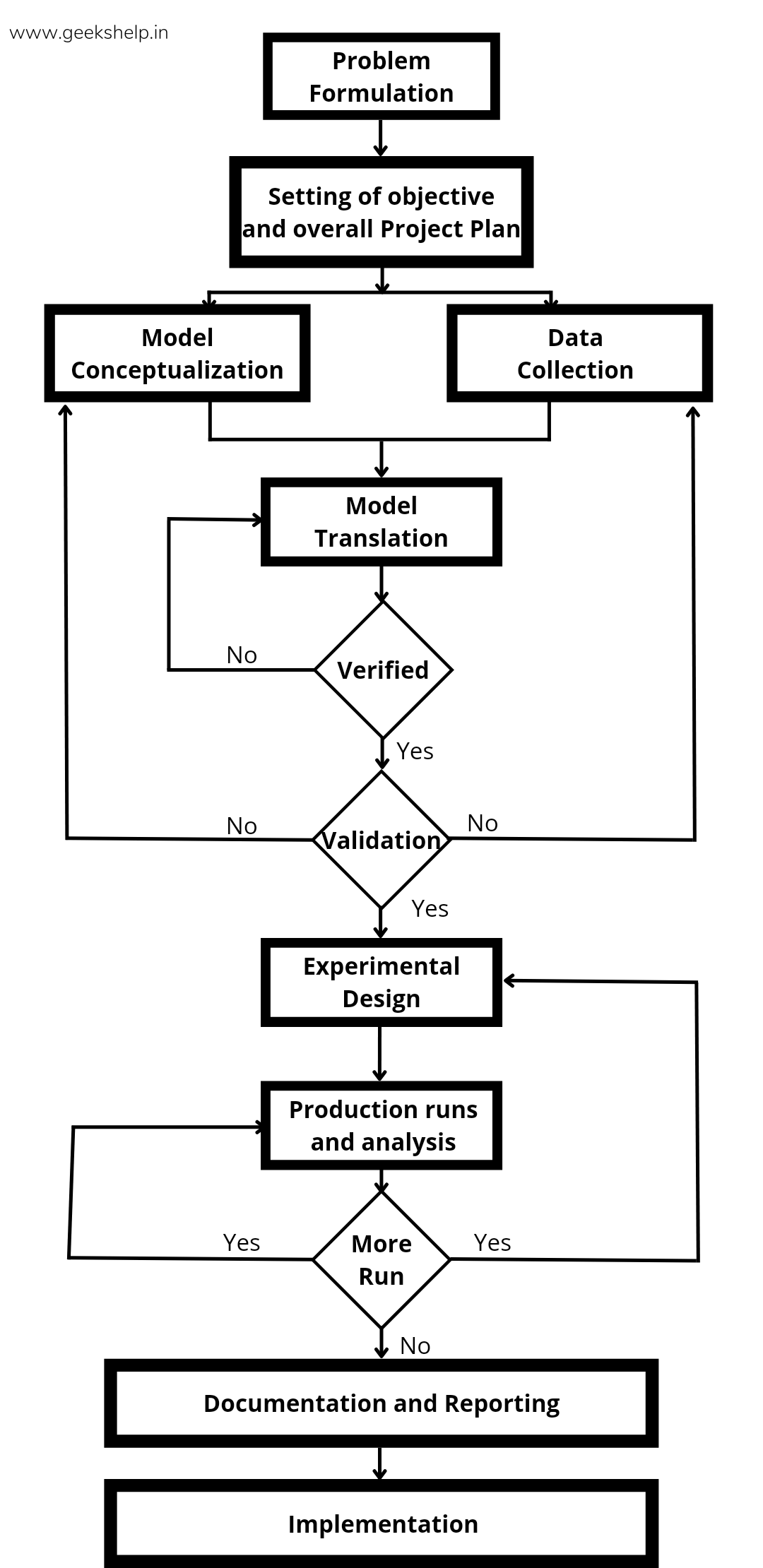Simulation is a technique of studying real world dynamical system by imitating their behavior using a mathematical model of the system or virtual model of the system on a digital computer.
Simulation is a combination of three field
i) Mathematics
ii) Computer Science
iii) Application Field

i) Mathematics field describe the System State Variable of Physical model or system.
ii) Computer Science implement or construct the virtual model of the system.
iii) Application field specify the behavior of physical system.
How many step in Simulation Study?
i) Problem Formulation,
ii) Setting of Objective and over all Project Plan,
iii) Model Conceptualization,
iv) Data Collection,
v) Model Translation,
vi) Verified,
vii) Validated,
viii) Experimental Design,
ix) Production runs and Analysis,
x) More Run?
xi) Documentation and Reporting,
xii) Implementation.
The given below figure show a set of steps to guide a model builder and through sound simulation study:

i) Problem Formulation
Every study should begin with statement of the problem the statement is provided by those that have the problem the analyst must ensure that the problem being described is clearly understood.
ii) Setting of objectives and over all Project Plan
The objectives indicate the questions to be answer by simulation. At this point a determination should be made concern weather simulation is the appropriate methodology for the problem as formulated and the objectives as stated.
iii) Model Conceptualization
The art of modelling is enhanced by an ability to abstract the essential features of a problem, to select and modified basic assumptions that characterize the system and then to enrich elaborate the model until a useful approximation results. Thus it is best to start with a simple model and build toward greater complexity.
iv) Data Collection
There is a constant interplay between the constitution of the model and the collection of the needed input data. As the complexity of the model changes the requirement data element can also change. Also single data collection take such a large portion of the total time required to perform a simulation. It is necessary to begin as early as possible usually together with the early stages of model building.
v) Model Translation
Most Real World System result in model that require a great deal of information storage and computation so the model must be entered into a computer recognizable format. We use the term program even though it is possible in many instances to accomplish the desired result with little or no actual coding.
vi) Verified
Verification pertains to the computer program that has been prepared for the simulation model. It is computer program performing property.
vii) Validation
Well done usually is achieved through the celebration of the model, an iterative process of comparing the model against actual system behavior and using the discrepancies between the two and the insights gained to improve that model.
viii) Experimental Design
The alternatives that are to be simulated must be determined. Often the decision concerning which alternative to simulate will be a function of runs that have been completed and analysed.
ix) Production Runs and Analysis
Production runs and their subsequent analysis are used to estimate measure of performance for the system design that are being simulated.
x) More Runs
Given the analysis of runs that have be completed the analyst determines whether additional runs are needed and what design those additional experiments should allow.
xi) Documentation and Reporting
There are two type of documentation "program" and "process"
• Program Documentation is necessary for numerous reasoning. If the program is going to be used again by the same or different analyst it could be necessary to understand how the program operates.
• Process Documentation provides the important history of a simulation project.
xii) Implementation
The success of the implementation phase depends on how well the previous 11 step has been performed. It is also contingent upon how throughly the analyst has involved the ultimate model using during the entire simulation process



